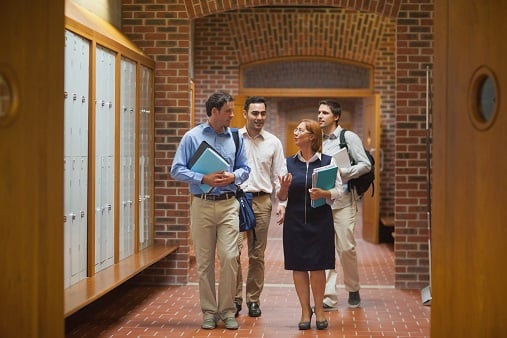Published on
Adults and the Higher Ed Experience (Part 1)

The following is the first of a two-part email Q&A with Melora Sundt, executive vice dean and clinical education professor at the University of Southern California’s Rossier School of Education. Online education is regularly seen as the ideal option for adults looking to return to higher education; it’s flexible to their schedules and is — at a minimum — of a similar quality to face-to-face programming. A point up for debate, though, is whether the campus experience can add value for adult learners. In this interview, Sundt begins to dissect this issue and shares her thoughts on the value of on-campus experiences for non-traditional students.
1. How can adult students benefit from the more traditional, on-campus experience?
First, let’s establish some definitions. Each of these terms includes a diverse range of characteristics. By non-traditional, I’m thinking of students with any combination of these characteristics: older; working; living independently of their parents or perhaps even caring for older parents; having children of their own, perhaps being a single parent; returning to school from a long absence, such as child rearing or having completed military service; and attending part time.
By traditional, on-campus program, we mean a two- or four-year brick-and-mortar program. I want to be clear that the unit of analysis is the program, not the institution.
“Online” can mean a variety of internet-based learning environments, with the most common form being asynchronous instruction, in which students access and respond to material independently of one another, whenever they want. Other online programs use synchronous instruction that broadcasts a live lecture one-way. Students watch the live broadcast at a regular time and submit questions via chat, for example. Still another form, the one with which I have the most experience, uses flipped instruction — asynchronous material accessed at the student’s convenience prior to a scheduled, live webcam-based class during which students and faculty can see and hear each other.[1]
It matters that we distinguish these different types of delivery because the barriers, advantages and outcomes are not uniform across them.
For example, key issues for any student choosing between a traditional program and online program are effectiveness of learning (outcomes) and the completion rate. The evidence about these two indicators says they vary by delivery approach. Research has found the asynchronous and one-way delivery models, generally, to have lower average completion rates than traditional face-to-face (F2F) programs. The synchronous, live video delivery model has completion rates much like traditional F2F programs. And some hybrid programs’ outcomes surpass some traditional programs.
There are a number of reasons for the differences in learning outcomes and completion rates, including the quality of instruction and the motivation and self-efficacy of the student. In particular, the level of engagement matters, and we know particularly for the non-traditional students, feeling that they matter influences their engagement with their learning. Any program — online or F2F — has the potential, through small class sizes, caring faculty, responsive student services and outreach, to communicate to a student that he or she matters. It can be harder for asynchronous programs to communicate that care and concern. The interaction is different. On the other hand, the live synchronous programs have an easier time of it because of the nature of the virtual interaction — faculty and students can see each other, and relationships are easier to establish.
Perhaps the greatest advantage that traditional F2F programs have over most online programs for the non-traditional student is their ability to support the co-curricular experience, and therefore support the social learning that happens in college. We know traditional students experience significant social and emotional growth in college, and the majority of this growth is related to their experiences outside the classroom — interactions with friends, student organizations, faculty outside of class, living in the residence halls, etc.
On one hand, older non-traditional students may not want or need these experiences. But I’d argue there’s still benefit to being part of an intellectual community, and this can be difficult for most online programs to create. It’s in those experiences — how the financial aid staff treats a student, a conversation after class with a faculty member — that the non-traditional student develops that feeling of mattering … or not. And we know that feeling of belonging and connecting is directly related to self-efficacy and retention.
– – – –
References
[1] Kimberly Ferrario, Corinne Hyde, Brandon Martinez and Melora Sundt, “An Honest Account of the Humbling Experience of Learning to Teach Online,” LEARNing Landscapes, v6 n2, Spring 2013. Accessed at http://www.academia.edu/4154860/An_Honest_Account_of_the_Humbling_Experience_of_Learning_to_Teach_Online
In the conclusion, Sundt discusses whether it’s possible for the on-campus experience to be replicated online for non-traditional students.
Author Perspective: Administrator


